Grappling is a fundamental part of mixed martial arts, and while the days of fighters dominating with ground skills alone are long gone, no one can hope to succeed even at the lowest levels of MMA without a decent grappling skillset.
Once a misunderstood part of the sport which seemed to get in the way of exciting brawls, grappling is now widely appreciated by educated fans for the intricate details that go into taking someone down to the canvas, keeping him there, and wrapping him up like a present.
Let’s look at what makes grappling so fundamental in MMA, where most techniques come from, and how grappling changes when punches and kicks are added.
What Is Grappling In MMA And Why It’s Important
The term grappling refers to martial arts and combat systems using techniques to control a person, take him to the ground, pin him, or submit him. A grappling art may focus on all of these aspects or just some of them, but in all cases, it includes holding the opponent rather than striking him to deal damage.
Grappling martial arts take striking into account when they are taught for self-defense, but in their sports form, all strikes are usually banned. This is not the case with mixed martial arts, though, making grappling for MMA unique compared to all of the disciplines commonly used in cage fighting.
In MMA, you can grapple the opponent on the feet, take him down, hold him down and strike him there, and apply a choke, a joint lock, or many other painful holds that force him to submit.
This liberal ruleset means many techniques from different, more tightly specialized grappling martial arts find their place and use in mixed martial arts.
Grappling is a central pillar of MMA. After all, it covers half of what you can do in a fight and can be used in many ways in the context of an MMA fight.
- Controlling an opponent on the ground is an excellent way of winning rounds and, ultimately, the fight because ground control is scored highly
- You can use superior ground positions to deal serious damage through ground and pound. This includes strikes, but it’s the grappling skills that provide the necessary control
- Submissions are the best and most convincing way to win a fight next to knockouts
- If the opponent has a striking advantage, you can use grappling to negate it
- A fighter may never win by submission, but if he does not have good defense, he will surely lose by one
- Takedown offensive and defensive skills largely decide where and how the fight will play out
Modern MMA’s stylistic dominance has been cyclical. Through Brazilian jiu-jitsu, the first UFC event opened the eyes of the general public to the undeniable importance of grappling in a real fight.
It showed that if a fighter does not have the skills to stay on his feet, he will get thoroughly dominated on the ground, even if he is the strongest hitter on the planet. Early on, Brazilian jiu-jitsu was new to most people and dominated MMA.
But then the athleticism and intensity of wrestlers overtook the sport once they learned how to defend against the most common submissions.
Then fighters learned how to defend a takedown, and striking became more important. And in the last decade, specialists have become a rare sight, with the best fighters exhibiting a well-rounded skillset on the feet and the ground.
But this article focuses on grappling in MMA, so let’s first identify the base ground fighting skillsets before I give you a few examples of how everything works together.
Grappling Styles Used In MMA
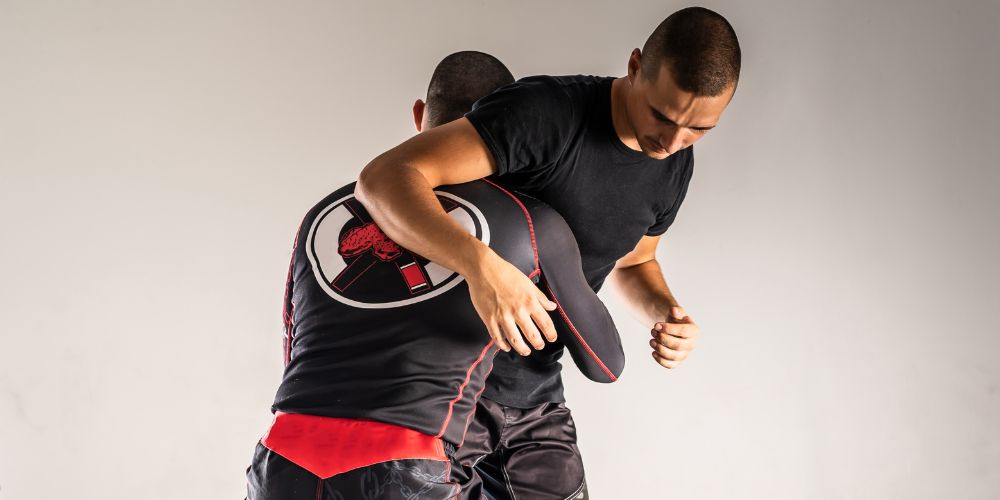
BJJ
Brazilian jiu-jitsu has made the most significant contribution to MMA because of the sport’s early history. In my opinion, the most critical thing BJJ has brought to mixed martial arts is the ability to fight from your back in the guard position.
Traditionally, being on the back meant losing, which has always been considered a disadvantageous position. But in BJJ, you have more ways to attack from the bottom guard than the person on top has.
Even when strikes are used, you can still use your legs and hips to control the distance and mitigate many dangers. With the guard, you also can finish the fight from the bottom with a submission or sweep the opponent and come on top.
The other significant aspect of BJJ is submissions. Other grappling arts also have chokes and joint locks, but none are as many or as diverse as those in BJJ.
With that said, only a small number of those are frequently used in cage fighting: the rear naked choke, guillotine, triangle choke, kimura lock, and armbar.
Here is a perfect illustration of the power of jiu-jitsu in MMA by one of the best to ever cross over:
Wrestling
In the overall history of the UFC, wrestling has brought up more world champions than any other style for several reasons. First and foremost, wrestling allows you to dictate where the fight will occur.
As much as BJJ is great on the ground, you must first get there, and few styles are as good at wrestling in teaching takedowns, especially without manipulating clothing.
Takedown defense is the other central aspect. Even the best strikers have to have elite takedown defense if they want to keep using their best skill. By deciding whether the fight will hit the ground, a fighter has a significant advantage because he gets to fight according to his strengths and not the other way around.
And let’s not forget wrestling requires and builds athleticism unrivaled in other styles, which is also an excellent attribute in MMA.
Here is how the GOAT of MMA used his world-class wrestling to dominate both strikers and grapplers alike:
Judo
Judo is less popular in MMA than BJJ and wrestling but it still has a prominent role. The rules of judo are more limited and allow fewer techniques, creating a narrower specialization. Judokas are experts in the clinch and taking down opponents from there. They are also masters of trips and foot sweeps.
Judo is done in a gi, which can be used, but even without it, many of the moves can be modified to work on a topless person.
You can watch some great judo moves executed in MMA in this video. Some have equivalents in wrestling, but most can be attributed to judo.
Sambo
Sambo is a mixture of judo, wrestling, and other martial arts with its own twist. Sambists are equally proficient in wrestling takedowns, judo throws, some nasty leg locks, and other submissions.
Sambo has two versions: sports sambo and combat sambo. Sports sambo is grappling only and strongly resembles judo, but combat sambo is the closest sport to MMA as it combines striking and grappling.
Sambo is less popular worldwide than the other styles, and all the practitioners are from Russia and Eastern Europe. Still, the style has produced some of the best MMA fighters of all time, like Fedor Emelianenko, Khabib Nurmagomedov, and Islam Makhachev, all of whom have been combat sambo world champions.
Mixing Striking And Grappling To Maximize Results
The real beauty of MMA is when grappling and striking work together. The combined danger changes both aspects of fighting to a level where MMA has become a separate entity, and each technique must be modified and adapted regardless of where it originates.
Here are some ways striking and grappling are used, complementing each other in mixed martial arts.
Ground And Pound
Perhaps the most MMA thing is the art of ground and pound. The term was created when wrestlers started using their superior takedown and pinning skills and adding vicious strikes from the top position.
The strikes are made possible only through the skill of keeping the opponent pinned down and in a position to receive them.
Using Punches To Set Up Takedowns
Another common way grappling and striking work together is to set up a takedown. Decent-level MMA fighters can hardly be taken down with a naked double-leg shot, so good MMA wrestlers first throw a few punches and then use the same punches to disguise their takedown.
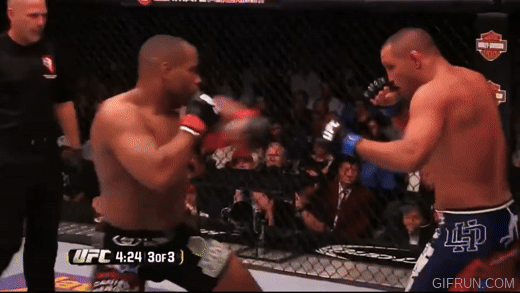
The other extremely common way strikes are used to complete a takedown is to time a strike and use the moment to duck under and take the striker down. With kicks, the leg is caught and then used to drag the opponent down.
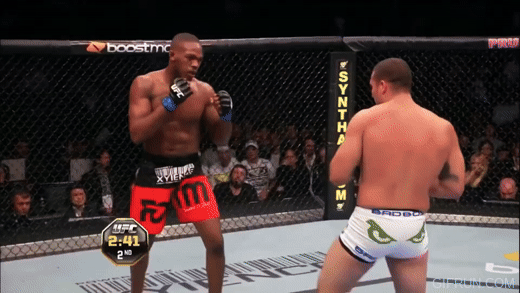
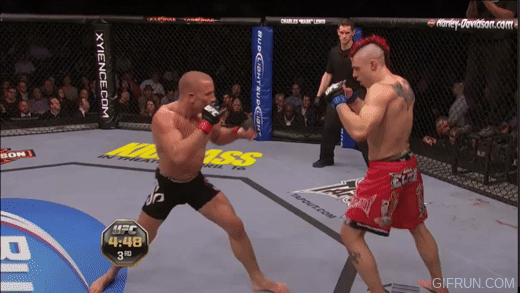
Using Takedown Feints To Land Punches
Takedown feints are also a common way of fusing striking and grappling. When a fighter wants to stay on his feet and is worried about getting taken down, he is susceptible to receiving strikes he would otherwise easily defend without the threat of a takedown.
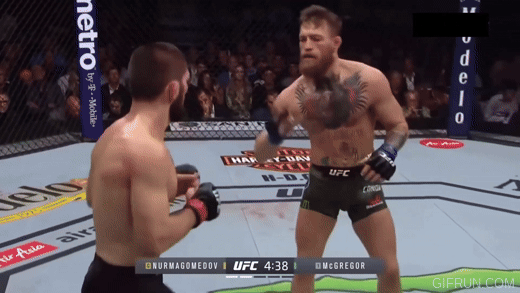
Strikes Are Used To Set Up Submissions
Many submissions in MMA happen after a fighter is hurt from strikes or exhausted. When some hard punches are landing, fighters try desperate things and put themselves in a position they wouldn’t otherwise. Many rear naked chokes are also aided by punches from back control, making things much easier than in a pure grappling contest.
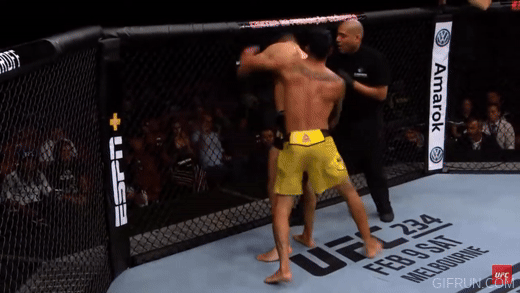
Then there is the option to catch a submission from the bottom as the opponent tries to strike you. This has been the story of many armbars and triangles in MMA.
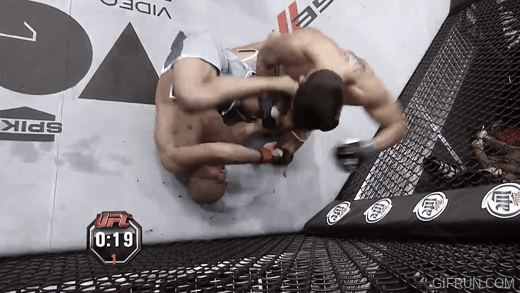
There are many more ways grappling and striking are used together in MMA. As I’ve said, the techniques come from styles like BJJ, judo, and wrestling, but when you include strikes, things quickly change.
Then there are the MMA gloves and cage, which are important factors not found in any origin styles. All of this makes MMA grappling unique and a separate style that must be trained by anyone who wants to have even sparring success, let alone a professional one.
MMA Grappling Summary
Unarmed fighting can roughly be divided into two categories- striking and grappling—the second deals with close-range control, ground domination, and submissions.
Many techniques from many styles find use in the cage, but BJJ and wrestling are by far the two most prominent styles used in MMA. But even they must be modified to be effective when the opponent can kick, punch and slam you.

